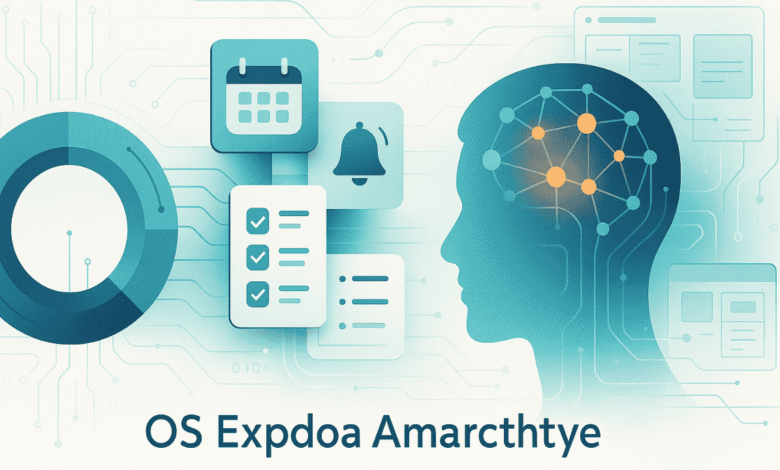OS Expdoa Amarchtype: A Holistic Model for Digital Efficiency and Adaptability

The digital world is constantly evolving, and with it, new concepts and frameworks emerge that shape how technology interacts with human behaviour, productivity, and experience. One such term that has recently gained attention across various niches is os expdoa amarchtype. Although the definition varies depending on the context—ranging from operating system design to productivity tools and even psychological frameworks—the keyword has become a fascinating point of discussion. In this article, we will explore the OS expdoa marchtype from multiple perspectives: as a potential operating system methodology, a productivity tool, a UX design framework, and even as an archetypal idea in human psychology. By doing so, we will create a holistic view of what this intriguing phrase may represent in technology and beyond.
Understanding OS Expdoa Amarchtype
At its core, os expdoa amarchtype can be broken into three parts:
- OS – usually refers to “Operating System,” the backbone software that manages hardware and applications.
- Expdoa – appears to represent a methodology or enhancement approach, often associated with optimisation and streamlined execution.
- Amarchtype – closely resembles “archetype,” a model, pattern, or framework that provides structure and direction.
Together, the os expdoa amarchtype can be interpreted as a structured framework for optimisation within operating systems or digital environments, while also having metaphorical interpretations in psychology and human behaviour.
OS Expdoa Amarchtype in Operating System Development
One of the most common interpretations of os expdoa amarchtype is as a methodology for building or improving operating systems.
In this view, it provides:
- Framework design: A blueprint for how system processes should be structured.
- Optimisation Strategies: Guidelines for Reducing Resource Consumption and Enhancing Performance.
- Security integration: Principles that ensure robust and resilient defence against cyber threats.
- Scalability principles: Enabling an OS to expand seamlessly as demands grow.
For example, modern operating systems, such as Linux, Windows, and Android, follow strict frameworks in their kernel architecture. The OS expando archtype idea would fit into this by serving as a higher-level methodology that guides how such systems should evolve to meet user expectations.
OS Expdoa Amarchtype as a Productivity Tool
In another interpretation, os expdoa amarchtype is described as a task management and productivity solution.
This usage highlights features such as:
- Task scheduling – Allowing users to plan, track, and complete tasks more effectively.
- Smart reminders – Notifications that adapt to user patterns and prevent missed deadlines.
- Note-taking capabilities – Helping professionals organise ideas and keep information at hand.
- Offline usability – Ensuring accessibility even without internet connectivity.
- Automation – Streamlining repetitive tasks to save time.
- Collaboration – Enabling teams to share projects and updates easily.
In today’s remote work culture, tools that follow the os expdoa amarchtype methodology would likely emphasise efficiency, customisation, and integration with digital ecosystems like Google Workspace, Slack, or Microsoft Teams.
OS Expdoa Amarchtype in UX and Experience Design
Beyond operating systems and productivity tools, OS Expdoa Amarchtype has also been framed as a framework for analysing and designing user experiences (UX).
In this sense, it focuses on:
- Consistency across platforms – ensuring users feel comfortable moving from one environment to another.
- Emotional resonance – creating designs that connect emotionally with users.
- Accessibility standards – building inclusive systems for users with different needs.
- Personalisation – adapting experiences based on behaviour and preferences.
UX experts often rely on models and archetypes when designing interfaces. The OS expando archetype serves as a guiding archetype for creating intuitive, engaging, and adaptable digital experiences.
OS Expdoa Amarchtype as a Psychological Archetype
Perhaps the most fascinating interpretation is the psychological one. In this perspective, the Oedipus complex is described as an archetype of human curiosity, resilience, and creativity.
It reflects traits such as:
- Curiosity – an innate drive to explore new technologies or experiences.
- Adaptability – resilience in adjusting to change, whether digital or personal.
- Creativity – the ability to innovate, problem-solve, and think outside the box.
- Collaboration – working with others to achieve collective goals.
By viewing OS Expdoa Amarchtype through a Jungian psychological lens, it becomes less of a technical framework and more of a symbol of how humans interact with evolving digital ecosystems.
Benefits of OS Expdoa Amarchtype in Different Contexts
Whether interpreted technically or psychologically, the os expdoa amarchtype carries several potential benefits:
- Enhanced efficiency – optimising processes and reducing wasted effort.
- Stronger adaptability – providing a framework that works across multiple environments.
- Improved user satisfaction – creating intuitive and emotionally resonant experiences.
- Personal growth and learning – encouraging curiosity, exploration, and creativity.
- Collaboration and connectivity – bridging individuals, teams, and systems together.
By bridging technology and psychology, this framework can be seen as a holistic approach to digital interaction and human development.
Challenges of OS Expdoa Amarchtype
Despite its potential, os expdoa amarchtype also comes with challenges:
- Lack of standardisation: Different fields interpret it differently, leading to confusion.
- Limited adoption: Since it is not widely recognised, mainstream institutions may hesitate to adopt it.
- Over-complexity: The combination of technology and psychology makes it difficult to implement practically.
- Data ambiguity: Without clear definitions, measuring its impact remains difficult.
These challenges highlight the need for further clarification, refinement, and scholarly exploration of the term.
Future of OS Expdoa Amarchtype
This approach may develop into a recognised model for interdisciplinary innovation. Possible directions include:
- Integration in AI systems – guiding how artificial intelligence frameworks are structured.
- Application in education – teaching adaptability, digital literacy, and productivity.
- Enterprise productivity models – shaping how organisations plan workflows.
- Psychological growth frameworks – blending technology with human development strategies.
If adopted widely, the os expdoa amarchtype could serve as a bridge between technology, design, and psychology, making it one of the most versatile frameworks of the digital age.
Conclusion on OS Expdoa Amarchtype
The OS expando archetype may not yet have a universally accepted definition. Still, its flexibility allows it to be interpreted across multiple domains—from operating system methodologies to productivity tools, UX frameworks, and psychological archetypes.
This multifaceted nature makes it both challenging and fascinating. On the one hand, it lacks clarity and recognition; on the other, it opens doors for new ways of thinking about optimisation, productivity, design, and human growth.
As the digital world continues to evolve, the concept of os expdoa amarchtype may eventually crystallise into a more defined concept—whether as a framework in technology, a guiding principle in UX, or even a metaphor for human adaptability in the face of constant change.
You May Also Read: The Future of Technology with Generalraspberry8102 Integration




